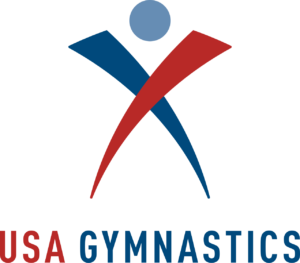Rhythmic Gymnastics Competitive Levels Explained
COMPETITIVE LEVELS
Level 2
This is the introductory level to competitive gymnastics. The girls will learn, perform, and compete a “floor” routine, as well as 2 apparatus routines while developing essential Rhythmic Gymnastics apparatus handling technique and body skills.
Level 2 gymnasts compete in the Rhythmic Xcel format.
Level 3
This is the first competitive level in the Junior Olympic program. Athletes build their competitive confidence and develop new skills as they compete in a “floor” routine and 2 apparatus routines.
Building a strong foundation for higher-level gymnastics is a developmental goal for these athletes. Ballet lessons begin at this level.
Level 4
Athletes at this level continue to develop higher-level competitive gymnastics skills and apparatus technique while competing a “floor” and 2 apparatus routines. Level 4 athletes compete at in-house events and are ready to attend travel competitions.
Ballet training is required 2x per week for this level. Level 4 competes in the Junior Olympic program.
Level 5 and 6
Athlete responsibility, sportsmanship, and self-discipline become more important as the girls progressively develop higher-level body skills and apparatus handling. Ballet training is required 2x per week for these levels.
The gymnasts in these levels compete a “floor” routine and 3 apparatus routines in the Junior Olympic format.
Level 7 & 8
Athlete responsibility, sportsmanship, and self-discipline are required as gymnasts in these levels are to be scored using a modified version of the FIG (International Gymnastics Federation) code of points.
Advanced body skills and pre-mastery apparatus handling are expected in each of the 4 individual routines.
Level 9 & 10
At this elite competitive stage, the gymnast must master difficult body skills and risk tossing maneuvers. Each individual competes in 4 apparatus events choreographed specifically for them.
Gymnasts earn Level 10 status based on rank at the USA National Qualifying Competition.
Elite level
The top 12 athletes (junior and senior) in the all-around competition at the USA National Championships.
national team
The top 8 athletes in the Elite Finals at the USA National Championships (junior and senior) are members of the U.S. National Team.
THE BASE OF RHYTHMIC GYMNASTICS
The focus of levels 3-6 in rhythmic gymnastics is the basic technique—first with the body and then with the equipment.
A gymnast can only successfully approach levels 7-8 with a solid technical foundation. Parallel to learning this foundation—basic technique—is maintaining physical health. To this end, coaches and gymnasts must focus on the development of proper body alignment (square shoulders and hips in all positions) and equal work with the right and left sides of the body and, when using the apparatus, equal work with the right and left hands. Only with a solid technical base and alignment may gymnasts attempt more physically demanding elements in the future.
Body Difficulty (BD): The values of the Body Difficulties will be calculated in accordance with FIG values and then multiplied (in level 3 only) by a factor to obtain the Difficulty score. Some additional Junior Olympic Body Difficulties have been added. Composition requirements: Since mastering proper basic technique is the goal of the Level 3-6 Program, the fundamental body movements and the apparatus technical groups fundamental to rhythmic gymnastics are the foundation of a composition.
Execution: Learning to coordinate movements with the music and, later, starting to connect with the character of the music, are basic goals of Artistry. Execution will be judged using the FIG technical execution faults. The judge penalizes errors with the body and/or equipment technique, an indication that the gymnast has not yet mastered the basic technique of the body and/or apparatus.
A PROGRESSION OF RHYTHMIC GYMNASTICS
The focus of levels 7-8 is gradual preparation with calculated progressions towards the Elite level. Level 7-8 is a developmental version of the FIG program. Differences between the FIG rules and those in Level 7 and/or Level 8 were adjusted to preserve the health of the body according to the age and development level of the gymnast and to support the emphasis on proper body and apparatus technique.
